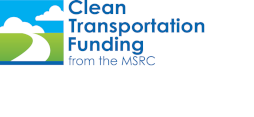The City of Riverside partnered with the City of Moreno Valley and Riverside County Transportation Commission to synchronize 35 consecutive traffic signals along the Alessandro/Central segment. The corridor runs from the intersection of Frederick Street in the City of Moreno Valley to the intersection of Magnolia Avenue in the City of Riverside. Alessandro Boulevard changes to Central Avenue at the Fairview Avenue intersection in the City of Riverside. The Riverside/Moreno Valley city limits are at the Old 215 Highway intersection east of the I-215 freeway. The Project installed traffic count/speed detection stations at three locations along Alessandro Boulevard/Central Avenue to continuously sample traffic volumes and help adjust the signal timing when significant increase in traffic volumes are noted. Furthermore, the project deployed wireless communication equipment throughout the corridor to establish a wireless signal interconnect system and provide communications to the City of Riverside's TMC. The project also installed closed-caption television cameras to allow for real-time traffic monitoring. Lastly, the project implemented new traffic signal coordination plans along the entire corridor to improve progression during peak hours, events, and traffic incidents.
0.00
The project required the collection of data such as turning movement counts, existing corridor information such as volume, lane configuration, speed limit, etc., and asset inventory such as existing and new signal infrastructure equipment. Newly implemented assets included roadway monitoring equipment, traffic count/speed detection systems, traffic signal controllers, and intersection communications. Utilizing this information along with existing traffic conditions along the Alessandro/Central corridor, new signal timing plans were developed using Synchro, a traffic modeling software. Tru-Traffic, a GPS-based time-delay measurement software was used to fine-tune the timing plans. Once signal timing optimization was complete, field observations were then conducted to ensure the plans were operating as expected. The timing plans required further fine-tuning by engineers to best accommodate field conditions/factors that could not be accounted for in the software such as increased or decreased speed caused by horizontal and vertical curves, roadway pavement conditions, land widths and other factors. Traffic monitoring equipment is currently being used to continuously analyze traffic conditions and to allow signal timing adjustments whenever necessary. The integration of traffic closed caption television cameras, count stations, and wireless communications allows for real-time monitoring of the corridors and deployment of signal timing adjustments to account for planned and unplanned incidents to ensure motorists are minimally impacted.
Alessandro has been carrying over 60,000 vehicles daily with the majority being Arlington's commuters from the I-215 freeway ramps to the Chicago/Arlington intersection in both the morning and evening peak periods. Due to the ongoing construction on Arlington Avenue at the SR-91 freeway, Arlington has recently experienced major delays and backup between Alessandro and the SR-91 freeway. As a result, Alessandro/Central has gained a significant amount of commuters bypassing Arlington. With the now existing roadway monitoring equipment and signal controller communication capabilities adjustments to the Central Avenue timing were made to accommodate the increased volume.
Traffic congestion along Alessandro Boulevard/Central Avenue has been a major issue, primarily due to its increasing number of commuters with ongoing construction projects along the I-215 and SR-91 freeways. There are multiple areas where circulation patterns, and/or traffic operations fluctuate and need improvements in the progression. Signal timing was an effective tool to generate quantifiable traveler benefits as measured by decreased vehicle delay, increased safety, lower emissions and reduced fuel consumption. By optimizing signal timing, qualitative benefits such as decreased cut-through traffic on alternate routes, reduced traveler frustration, and reduced conflicts between motorists, pedestrians, and bicyclists could be expected.
City of Riverside desires to implement signal timing optimization on other corridors. The SR-91 High Occupancy Vehicle project construction near Riverside's downtown continues to bring vehicle congestion on other major arterials within the City and by implementing this project, the City will be able to relieve commuter frustration and reduce emissions by improving traffic flow.
Through the implementation of the project, Alessandro/Central will meet the demands of the roadway users including motorized vehicles, bicycles and pedestrians. Platoons of vehicles now travel through a series of signals with minimal or no stopping. The project will continue to benefit the City of Riverside, Caltrans, and City of Moreno Valley and is a great example of a collective partnership between the South Coast Air Quality Management District, City of Riverside and City of Moreno Valley to bring traffic congestion relief to the Inland Empire.
City of Moreno Valley
Riverside County Transportation Commission
